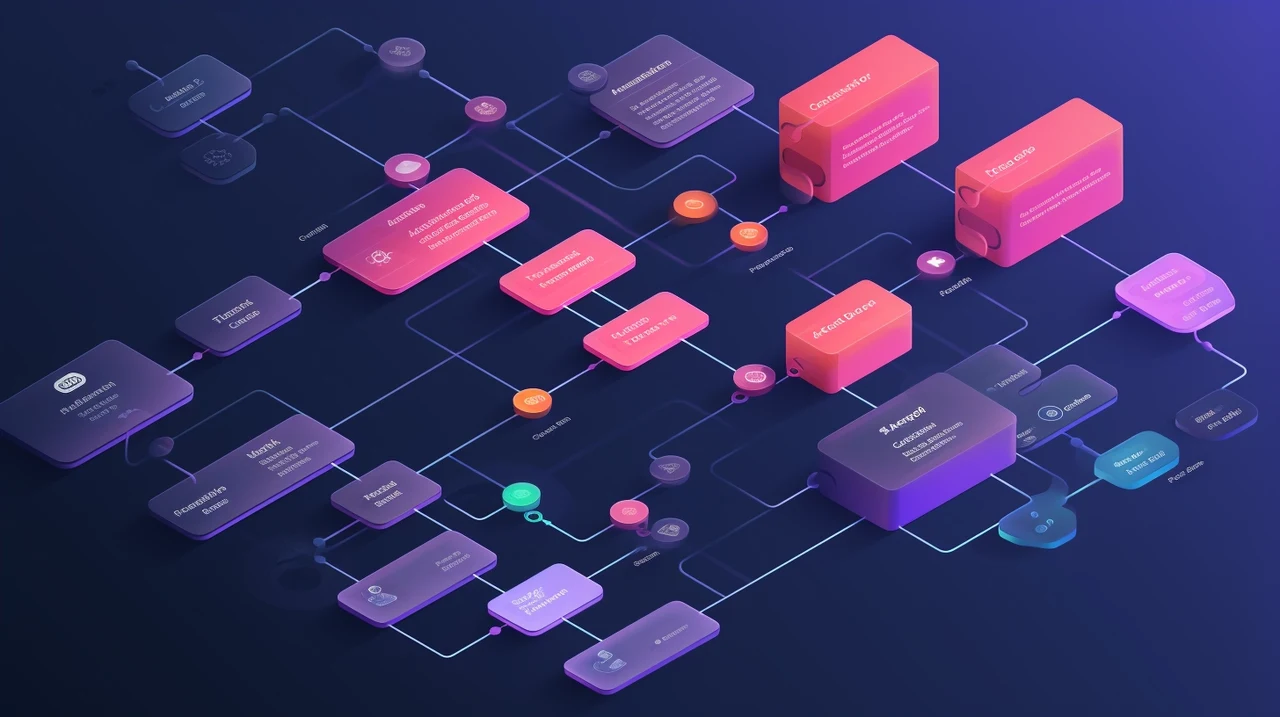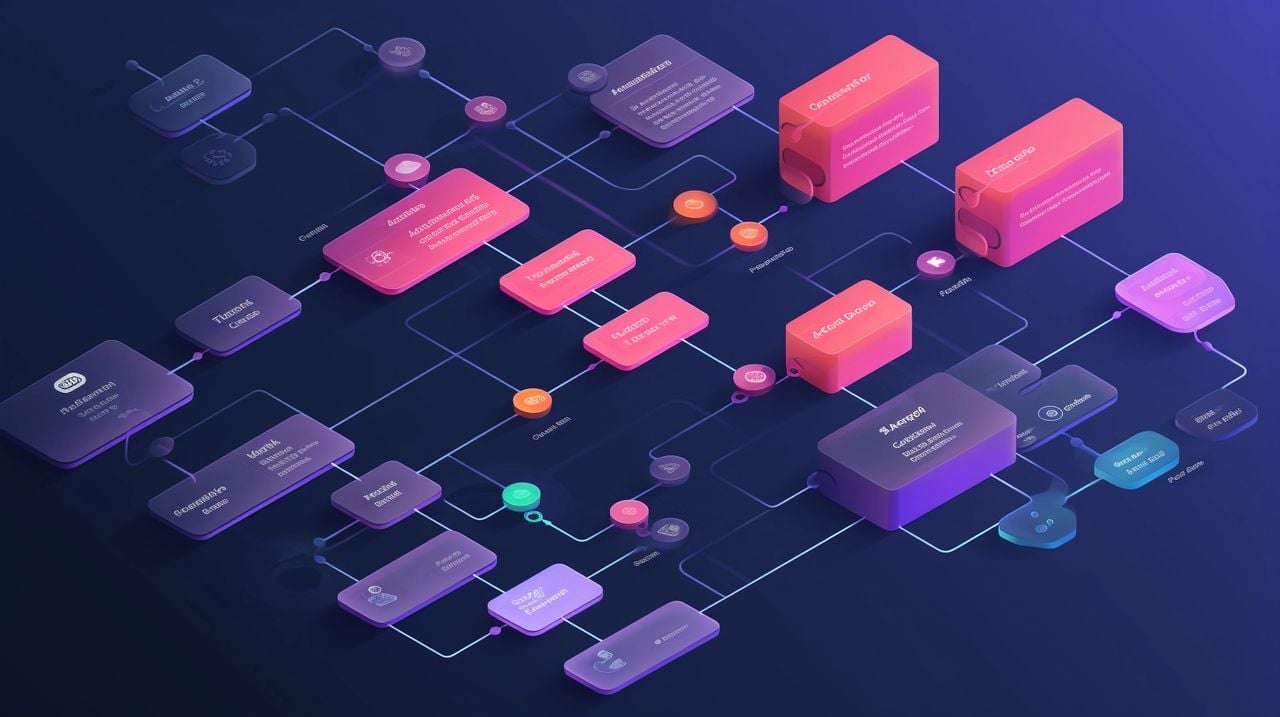
The ability to quickly turn complex thoughts into clear visuals is invaluable in today’s fast-paced world. ChatGPT as a fantastically versatile tools that can help anyone from students to professionals visualize their ideas with ease. Whether you’re looking to improve your learning, understand systems better, generate new ideas, or enhance your brainstorming sessions, ChatGPT’s features can be a significant asset.
Visual aids like mind maps and ChatGPT flowcharts do more than just show information; they make it easier to understand and remember. When ChatGPT this combined with the AI diagrams plugin, developed in collaboration with Whimsical, to create these visuals that are specifically designed to meet your needs. This handy plugin is designed to help you gain a deeper insight into any topic you’re exploring all thought process you might be exploring. The Whimsical AI diagrams plugin available in the ChatGPT Plugins library is a fast way to turn text information into visual diagrams on the Whimsical platform, making it a valuable resource for anyone looking to visualize their ideas quickly and accurately.
Create ChatGPT flowcharts using plugins
When creating diagrams, it’s important to have a clear strategy. The GCA (Goal, Context, Action) prompt sequence is a method that helps guide ChatGPT in crafting diagrams that meet your specific goals. By defining what you want to achieve and providing the right context, ChatGPT can take the necessary steps to produce a diagram that meets your exact needs.
Here are some other articles you may find of interest on the subject of improving your productivity using ChatGPT :
Choosing visual diagrams over traditional text lists can greatly enhance how you process information. They foster creative thinking and help in structuring and prioritizing thoughts, which is especially beneficial during brainstorming sessions. For instance, a mind map can simplify the understanding of complex systems, such as the architecture of sophisticated language models like ChatGPT itself.
Once ChatGPT has generated a diagram, you’re not stuck with a static image. You have the freedom to customize it to ensure that the final product is not just informative but also tailored to your specific project or field of study. This level of personalization means that the diagrams you work with are perfectly aligned with your objectives.
If you don’t have access to ChatGPT plugins you can also use the free version of ChatGPT to create flowcharts, diagrams and more. Here’s a quick overview.
How to create flowcharts with ChatGPT without plugins
ChatGPT can assist in generating content, structuring ideas, or providing suggestions for the flowchart, while Whimsical is the platform where the actual diagram will be created and visually organized.
- Define the Purpose of Your Flowchart: Start by clearly defining what you want your flowchart to represent. This could be a process, a decision tree, a set of instructions, etc. Knowing the purpose will guide the structure and content of your flowchart.
- Generate Content with ChatGPT: Use ChatGPT to help brainstorm or refine the steps, decisions, or processes that will be included in your flowchart. For example, if you’re creating a flowchart for a customer service process, you can ask ChatGPT to list typical steps in such a process.
- Organize the Information: Once you have the necessary content, organize it logically. Determine the starting point, the sequential steps, decision points, end points, etc. ChatGPT can assist in ensuring that the flow is logical and covers all necessary components.
- Use Whimsical to Create the Flowchart:
- Start a New Flowchart: In Whimsical, start a new flowchart project.
- Add Flowchart Elements: Use the tools in Whimsical to add shapes, lines, and text. Each shape can represent a step or a decision, and lines will illustrate the flow between these steps.
- Input Your Content: Transfer the content generated and organized with ChatGPT into the flowchart. This involves typing text into the shapes and arranging them to reflect the correct sequence and relationships.
- Customize Your Design: Utilize Whimsical’s features to adjust the layout, colors, and fonts to make the flowchart clear and visually appealing.
- Review and Refine: After your initial draft, review the flowchart to ensure it accurately represents the process or system. ChatGPT can be used again here to help review or suggest modifications for clarity or completeness.
- Iterate as Needed: Flowcharts often require several iterations to get right. Use both ChatGPT and Whimsical iteratively to refine the flowchart until it meets your needs.
Why flowcharts are so useful
Flowcharts are highly effective at representing data and processes for several reasons, rooted in both cognitive psychology and information theory.
- Visual Clarity: Humans are predominantly visual creatures, and flowcharts leverage this by presenting information visually. This makes complex processes easier to understand compared to text-based descriptions. Visual representations allow for quicker comprehension and can make patterns and relationships more apparent.
- Logical Structure: Flowcharts provide a clear, logical structure to data or processes. They break down processes into individual steps or stages, making it easier to follow and understand each component’s role and the overall flow. This step-by-step representation is particularly useful for identifying inefficiencies or bottlenecks in a process.
- Standardized Symbols: Flowcharts use standardized symbols (like rectangles for steps, diamonds for decisions, arrows for flow direction), which provide a universal language for process representation. This standardization means that flowcharts can be understood by a wide audience, regardless of language or technical background.
- Facilitates Communication: They are excellent tools for communication. They can convey complex processes simply and effectively, making them ideal for training, brainstorming, and explaining processes to stakeholders.
- Decision-Making Aid: In decision-making processes, flowcharts can visually map out the potential outcomes of different decisions, making it easier to foresee the impact of each choice. This can lead to more informed and considered decisions.
- Error Identification and Problem Solving: By laying out a process step by step, flowcharts can help in identifying where errors may occur or where a process might be inefficient. This makes them valuable tools for problem-solving and quality control.
- Versatility: Flowcharts are versatile and can be used in various fields and for different purposes, from software development (algorithm design) to business management (workflow analysis) and education.
- Facilites Learning and Memory: Flowcharts can enhance learning and memory retention. The visual representation of information is often easier to recall than text or verbal descriptions. This is partly due to the dual coding theory, which suggests that visual and verbal information are processed differently and independently, leading to more robust memory formation.
- Scalability and Detail Management: Flowcharts can be designed to represent both high-level overviews and detailed processes. This scalability allows users to start with a broad view and drill down into more detailed aspects as needed, making them effective for both strategic planning and detailed process analysis.
- Integration with Digital Tools: In the digital era, flowcharts have become even more powerful with the integration of software tools. These tools can automate parts of the flowchart creation, allow for easy updates, and enable interactive elements, such as hyperlinks to additional resources or data.
In summary, flowcharts are effective because they align well with how humans process visual information, provide a clear structure for complex data, use a standardized approach for broad understanding, aid in communication and decision-making, and are versatile and adaptable to various contexts. These attributes make them an invaluable tool in a wide range of disciplines and applications.
OpenAI’s AI model is a powerful tool for anyone interested in creating mind maps, flowcharts, and diagrams quickly and with precision. By utilizing the AI diagrams plugin and following the GCA prompt sequence, you can produce visual aids that significantly boost your learning and creative endeavors. For those eager to explore the full range of ChatGPT’s features, resources like the ChatGPT Mastery course are available. By tapping into the potential of visual learning with ChatGPT, you can transform the way you organize and comprehend information, making your workflow more efficient and your ideas clearer.
Filed Under: Guides, Top News
Latest timeswonderful Deals
Disclosure: Some of our articles include affiliate links. If you buy something through one of these links, timeswonderful may earn an affiliate commission. Learn about our Disclosure Policy.

